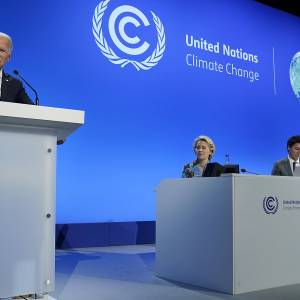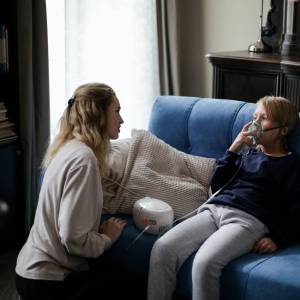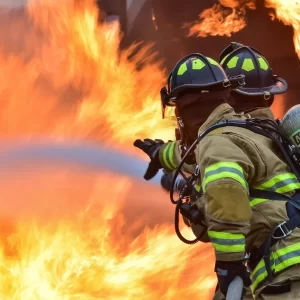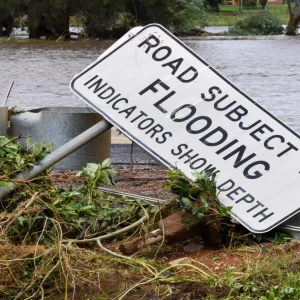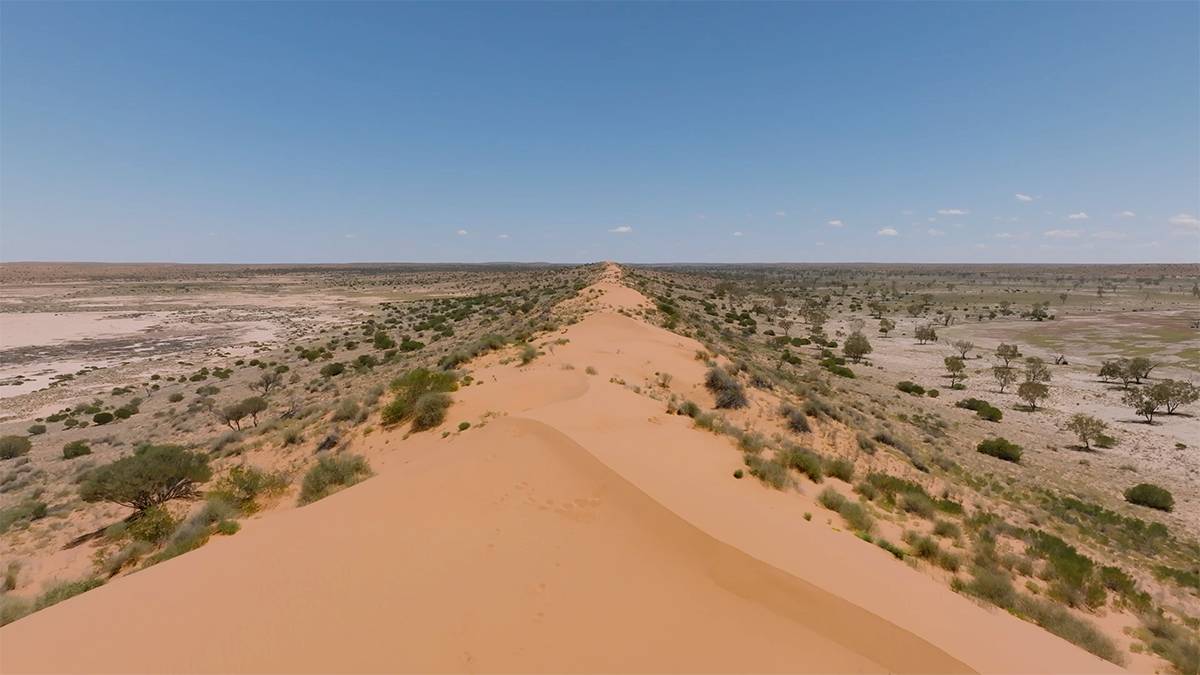
Can Australia take a human rights approach to coping with extreme heat?
IN MID-2022, THE Northern Hemisphere weathered one of the most difficult summers on record, with extreme heat events causing loss of life and social harm, especially in cities. New Delhi, Phoenix, San Francisco, Shanghai all hit records of heat and humidity. Headlines shouted about people dying in the heat: agricultural workers, bicycle delivery workers, the elderly who had survived covid but could not survive the heat in their own apartments.
Heat-related deaths are on the rise globally. In 2019, a study in The Lancet attributed 356,000 deaths to extreme heat. Over 2,000 people died in Spain and Portugal in the space of one week in July this year due to heatwaves – and these were mostly the countries’ elders.
At the same time, more evidence is emerging from India and Pakistan about the impacts of those countries’ heatwaves on pregnancy (Bekkar et al. 2020). We now know that for every 1-degree Celsius temperature rise, the risk of both premature and stillbirths rises by 5%. One Australian study found a 46% increase in stillbirths during heatwaves, and others have found a link between heat exposure during pregnancy and low birth weight.
If we think about what greatest risk to the right to life caused by climate change, it is – hands-down and without a doubt – extreme heat events.
This means there is simply no excuse for those in the Southern Hemisphere not to heed the lessons in inequity revealed by heatwaves reveal, nor to learn from the experiences of those in the north. Extreme heat, like Covid-19, affects marginalised and vulnerable people adversely, but there are a range of exciting ideas from global practice that Australia could apply to take a human rights approach to extreme heat events in this part of the world.
ACCORDING TO THE Queensland Department of Health, an extreme heat event occurs when temperatures sit at 5 degrees above average for three days or more – and particularly when this is coupled with high levels of humidity. These conditions pose serious health risks for the elderly, for young children, for pregnant women, for outdoor workers and for people with extant chronic health conditions.
Heatwaves also affect people’s ability to work and to access services; they affect those facing housing stress or homelessness. Serious issues also emerge around energy poverty as well as issues of power failures and inadequate housing that are further exposed during heatwaves.
Plus there are structural urban planning issues to consider. Many outdoor spaces in Australia were never designed for extreme heat – for instance, certain places in Western Sydney are affected by heat sinks now due to poor planning in the past, as was explored in this beautiful photo essay by Sophie McNeill and Matthew Abbott for Human Rights Watch.
While Australia still does not have a federal climate health strategy, some states do, the most comprehensive being South Australia, with its useful guide Healthy in the Heat. Melbourne, too, now has two Chief Heat Officers, one of six cities globally that are participating in an international movement to improve how cities handle heat in a warming world, thanks to a partnership with the US-based Adrienne Arsht-Rockefeller Foundation Resilience Center.
But we still haven’t done the deep thinking and planning required to get communities ready – and the next southern summer is almost here. So here are some important questions to consider.
Will we have to think about seasonal mobility?
According to a recent deep listening tour undertaken by Griffith University’s Policy Innovation Hub and the Climate Justice Observatory, people in Northern Queensland are already discussing a future that might involve moving south for January. Will there be parts of Australia that are already difficult places to live and work in the summer months that tip over to become uninhabitable on a seasonal basis?
What happens to summer sport or agricultural activities, or tourism?
What will be the impact on decent work?
According the International Labour Organization (ILO), ‘decent work’
… sums up the aspirations of people in their working lives. It involves oppor- tunities for work that is productive and delivers a fair income, security in the workplace and social protection for all, better prospects for personal devel- opment and social integration, freedom for people to express their concerns, organize and participate in the decisions that affect their lives and equality of opportunity and treatment for all women and men.
It is, in the description of the UNHCR’s Committee on Economic, Social and Cultural Rights, employment that ‘respects the fundamental rights of the human person as well as the rights of workers in terms of conditions of work safety and remuneration’ with ‘respect for the physical and mental integrity of the worker in the exercise of his/her employment’.
Before the northern summer of 2022, a recent ILO report (2019) had already targeted agricultural jobs, construction, sport and tourism as sectors affected by heat stress. So should the government provide JobKeeper-type payments to outdoor workers during heatwaves? What about those in the informal sector, such as workers who are delivering food by bicycle? Will companies accept the need for extreme heat labour safeguards?
How will access to health be impacted?
In 2016, a Climate Council report (Hughes L, Hannah E) used existing data to map increases in ambulance call outs, emergency department presentations as well as heat related deaths to indicate additional pressures on health system during hotter months. This report – now more than six years old – found that ‘although many states have taken significant steps to upgrade their heat and health warning systems since the deadly heatwaves of 2009, strategies vary considerably from state to state and focus primarily on reactive rather than long-term planning’.
Exploring the 2009 heatwaves that impacted Australia’s east coast, this report found that
emergency call-outs jumped by 46%; cases involving heat-related illness jumped 34-fold; and cardiac arrests almost tripled in Victoria. In total, 374 excess deaths were recorded, a 62% increase on the previous year
It also reported positively that various Western European countries had ‘already taken significant strides in preparing their cities, industries and people for the threat of extreme heat’.
What is the impact on homeless populations?
Homeless people need adequate shelter during a heatwave to avoid fatal consequences. Access to food is more difficult and food spoils more easily, plus there is additional need for increased amounts of water. Triggers for mental health and exposure to trauma increase as does the underlying issue that homeless people may have limited access to safe spaces during any extreme weather event (homelessness services may not be equipped to support increased demand). As the experience in the US demonstrated earlier this year, it was clear that cities like San Francisco were ill-equipped to respond to help homeless people in the latest heatwaves.
In Australia, many airconditioned spaces require people to undertake a commercial transaction to remain there. This begs an important question: do places like public libraries take on the role of ‘cool banks’, as they did in the UK during the heatwaves there?
Heatwaves also implicated in increasing rates of homelessness among those at risk. And while there are exciting examples of strategies that could build resilience among homeless populations exposed to extreme weather events, more needs to be done in this space – both on the ground, and in terms of modelling and planning.
Current strategies in place in Australia include:
- Out of the Storm: a South Australian intervention using trauma informed extreme weather resilience education; and
- A city-wide plan for heatwaves and homelessness put in place by the City of Melbourne.
Will heatwaves worsen mental health?
Increased heatwaves will likely have implications on mental health in terms of social connectedness and social isolation, particularly among vulnerable groups. But extreme heat also affects mental health more broadly: it is already known to lead to increased aggression and increased suicide rates. What should states, cities and communities be doing to help their citizens look after each other’s and their own mental health during a heatwave? And what lessons can be learned here, too, from the pandemic?
What about electricity bills?
Energy bills are a hot topic around the world as one hemisphere approaches its winter and the other its summer. In the context of the coming summer months, should utilities companies be able to cut off power during an extreme heat event – even if all processes have been followed? This has been – literally and metaphorically– a hot debate in the USA. While many US states have policies preventing power shutdown during the colder months, there are fewer clear policies in place in terms of summer. As Rebecca Leber reported for Vox in early August:
The nation doesn’t have an accurate picture of just what the lack of any coherent cooling strategy costs the public. Some low-income consumers have to choose between turning on the AC or buying food. For some, it means utilities have cut off their power for falling behind on an unpaid bill, even in life-threatening heat.
And should people be evicted during a heatwave?
These are debates it’s important to have now, not during a heatwave.
Is there a right to air-conditioning in certain spaces?
On 19 April 2022, the Queensland Government reported that air-conditioning had been delivered for ‘every single classroom, library and staffroom in every single state school’.
Should the state bear the cost of air-conditioning for early childcare centres, aged care homes, prisons and schools? And should swimming pools be free in towns without free airconditioned spaces?
Do we have a right to shade in our streets and towns?
Launching the Climate Justice Observatory: Cruel Summer phase 1
In late 2022, Griffith University will launch its Climate Justice Observatory to explore these questions and more. The Observatory will apply the established human rights methodologies of observatories – the provision of reliable information, equity data, climate modelling, long- form journalism and multidisciplinary expert analysis – to the question of climate justice. This online resource will allow citizens to monitor issues, map local problems and crowd- source solutions while also providing campaign resources.
With its first work focused on heatwaves in Queensland, the Climate Justice Observatory will also begin the critical work of monitoring and tracking the development of laws, policies and justice interventions in this region and beyond, adding value to existing open-access global resources for citizen education and action everywhere.
References
https://www.health.vic.gov.au/environmental-health/planning-for-extreme-heat-and- heatwaves
Bekkar, Bruce et al. 2020. “Association of Air Pollution and Heat Exposure With Preterm Birth, Low Birth Weight, and Stillbirth in the US: A Systematic Review.” JAMA Network Open 3(6): e208243–e208243.
Hughes L, Hannah E, Fenwick J. 2016. The Silent Killer: Climate Change and the Health Im- pacts of Extreme Heat. Climate Council.
International Labour Office. 2019. Working on a Warmer Planet: The Impact of Heat Stress on Labour Productivity and Decent Work. Geneva: ILO.

